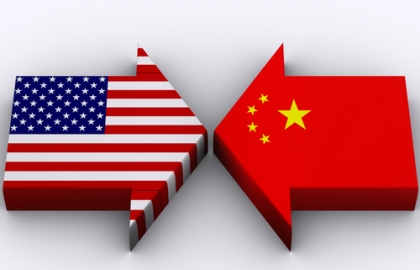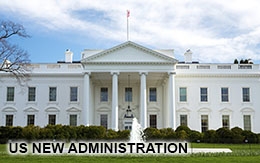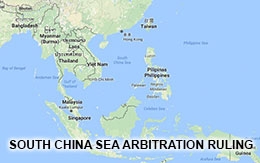The geopolitics of US-China naval rivalry in the Western Pacific
For China, naval strategy is a means to force the US to adjust its geopolitical position in the Western Pacific to accommodate its rise. The Chinese intention is to edge the US out of the Western Pacific and to dislodge it from its current forward military presence, leaving the South China Sea and Taiwan to a Chinese sphere of influence.
By Leszek Buszynski
November 14, 2016

For China, naval strategy is a means to force the US to adjust its geopolitical position in the Western Pacific to accommodate its rise. The Chinese intention is to edge the US out of the Western Pacific and to dislodge it from its current forward military presence, leaving the South China Sea and Taiwan to a Chinese sphere of influence. China has developed new offensive capabilities which raise naval warfare to new levels where ballistic missiles with manoeuvrable warheads and integrated information systems may become decisive.
The US would then be obliged to adopt an avoidance strategy, and to negotiate an accommodation with Beijing. If the risk of maintaining a forward position is assessed as excessive in view of China’s deployment of weapons systems a new administration in the US may consider such an accommodation. However, withdrawing from the South China Sea and Taiwan may be a too high a price to pay. The US has other options which involve the building of naval coalitions to offset China’s rising power.
The US is concerned by what the Pentagon has called China’s anti-access/area denial (A2/AD) naval strategy, which is intended to deny the Western Pacific to the US navy up to the first island chain. The Chinese navy depicts the first island chain as a zone of maritime defence running from the Japanese archipelago to include Taiwan and either part or all of the South China Sea. No exact depictions of the line have been published. The second island chain is even vaguer and runs from Japan through the Pacific to the coast of Papua. To extend a naval presence in these zones, China has developed the world’s largest submarine fleet with at least 70 vessels, including 13 Song class, 12 Yuan class and 12 Kilo class diesel electric vessels purchased from Russia.
Most significant is the development of the Shang class nuclear powered submarines of which five have been built. With an extended range and equipped with the YJ-18 anti-ship missile the Shang class submarine can challenge US carriers and major surface vessels in these maritime zones. China also is developing a carrier force which could be deployed to provide air cover in the South China Sea, and the East China Sea in operations against Taiwan and Japan. The Chinese purchased the hull of the Russian carrier Varyag and with renovation and refitting converted it into the Liaoning, based temporarily in Dalian. The Liaoning is being used for flight deck landing and takeoff training while China is in the process of constructing its first indigenous carrier.
Reports indicate that the Chinese Navy is planning the construction of a larger nuclear powered carrier to match those deployed by the US. The Chinese will dispense with the ski jump which is a feature of the Liaoning and the carrier under construction and will adopt electromagnetic launching systems for aircraft (EMALS) which will allow aircraft to take off with heavier loads and weapons. Carriers would be vulnerable to air and cruise missile strikes if they venture into hostile maritime territory so China is preparing for other measures against the US navy that may change naval operations entirely in the future.
China is also developing the “killer carrier” ballistic missile or the DF-21 in C and D versions which is intended to target US carriers within a 1,700 km range. This would keep the US carriers at a sufficient distance from operations within the first island chain depriving them of range for their airpower. China has also unveiled the DF-26 ballistic missile and with an estimated range of 3,000-4,000 kms it is capable of striking the US base in Guam, and may also be used as a carrier strike missile.
American reports have been sceptical of the ability of this missile to hit a moving vessel but with a terminally guided warhead the flight trajectory may be adjusted to the movements of the target. In the future China may also deploy manoeuvrable re-entry vehicles (MARVs) on these missiles which can be independently guided to their targets. American carriers may be equipped with countermeasures including lasers and related technologies in a Naval Integrated Fire Control – Counter Air system (NIFC-CA) which would track and destroy anti-ship cruise missiles launched from submarines or aircraft and ballistic missiles. This system would trigger the launching of the SM-6 “missile killer” which would be deployed on American naval vessels.
However, a saturation attack by Chinese missiles equipped with terminally guided warheads, or MARVs, would be difficult to prevent, making American carriers vulnerable. Moreover, integrating naval capabilities and ballistic missiles into an overall Command, Control, Communications, Computers, and Intelligence (C4I) system would allow China to coordinate missile attacks against American carriers with submarine operations against US surface vessels.
If China could effectively compel the US to withdraw from the Western Pacific and adopt an offshore position the political repercussions would be far reaching. ASEAN would acknowledge China as the regionally dominant power and members would scramble to make peace with Beijing. The US alliances with Japan and South Korea would be weakened as both would face similar pressures to accommodate Beijing. The Obama administration has insisted on “freedom of navigation” patrols in the South China Sea to demonstrate its commitment to stay but they have been criticised as high risk and provocative.
Critics claim that American naval vessels are too exposed to Chinese attack in operations close to the Chinese mainland. They also argue that the age of the carrier has passed, and that the US navy’s Nimitz class carrier at 100,000 tons with a price tag of $8.5 billion is too vulnerable to deploy against China’s offensive systems. In response to this vulnerability the US navy has been developing stealth technology and UAVs which may allow it to maintain a presence in the Western Pacific without being tracked and targeted. The US Navy has moved into unmanned air systems such as MQ-25A Stingray, an aerial tanker that may extend the combat range of carrier aircraft such as the F/A-18 Super Hornet and the F-35C Joint Strike Fighter. US carriers may then be deployed well out of range of Chinese offensive systems. In addition, the US Navy has been developing stealthy surface vessels and in October 2016 took delivery of the USS Zumwalt, a destroyer with the radar signature of a small fishing vessel which may remain undetected at sea.
According to the US Navy it will penetrate enemy defences for land attacks and open surface warfare and has been heralded as a breakthrough but there are limitations on the number the US can produce. At a cost of $4.3 billion and with huge cost overruns the US navy had to scale down its order from 32 to only three. A force of three stealthy destroyers would be able to launch pin prick attacks but it would not be a massive deterrent. Indeed, the application of stealth technology is constrained by its exorbitant cost.
The US has adopted a strategy of engaging the navies of allies and partners such as Japan and India to deny or constrain Chinese naval expansion in areas of interest to Beijing. As China’s pressure on the US increases in the Western Pacific, American strategists hope to involve Japanese and Indian navies more deeply in naval coalitions for a demonstrated deterrent effect upon China. Chinese pressure against Japan in the Senkaku/Diaoyu Islands area has triggered a hostile reaction in the Liberal Democratic government of Shinzo Abe.
The intensification of this dispute has brought Japan into the South China Sea dispute. In November 2015, a Chinese naval surveillance vessel sailed through the waters around the Senkaku/Diaoyu islands, in December it was followed by a Chinese coast guard vessel, in June 2016 a Chinese naval vessel sailed through contiguous waters around the islands. The Japanese reaction to what they regard as maritime harassment has been to work more closely with the US to plan for cooperative operations according to the 2013 National Defence Program Guidelines.
As a demonstration of interest in the South China Sea, Japan has provided six used patrol vessels to Vietnam and two large patrol ships and five surveillance aircraft to the Philippines. Two Japanese destroyers visited Subic Bay in the Philippines in April 2016 and shortly after made a port call in Vietnam’s Cam Ranh Bay. The Americans have pressed the Japanese to join their “freedom of navigation” patrols in the South China Sea but they have resisted, fearing an escalation of tensions with China in the East China Sea. Nonetheless, the Japanese have been supporters of a naval coalition strategy to counter China.
The US has also been developing security cooperation with India as a response to China’s naval entry into the Indian Ocean. China’s “far seas” naval deployments bring it into the Indian Ocean to protect its trade and oil lifeline to the Middle East, for anti-piracy missions and to undertake evacuation of its citizens when threatened. China has established a naval support outpost in Djibouti and plans to establish more of such posts to support its naval activities in the Gulf area, the port of Salahah in Oman may be the next Chinese outpost.
Indian leaders are alarmed by Chinese movements which creates a basis for common understanding with the US. US Defence Secretary Ashton Carter declared that India could become a “key guarantor of security in the Asia Pacific region” and that the US would assist India with the modernisation of its navy. India has two carriers, the INS Vikrant, at 40,000 tons, and the refurbished Kiev carrier the INS Vikramadtiya at 45,000 tons; The US has agreed to provide technical cooperation for the development of India’s third carrier at 65,000 tons, which will include EMALS technology. The US and India are also planning to cooperate over the tracking of submarines in the Indian Ocean, particularly Chinese submarines which have been detected around the Andaman and Nicobar Islands where India has a joint command outpost.
US naval cooperation with Japan and India is intended to underpin a naval coalition that would link US allies and security partners with frontline states in the South China Sea such as Vietnam. While China presses Japan in the East China Sea and India in the Indian Ocean, it will further American objectives in developing this naval coalition, bringing diplomatic pressure to bear on Beijing and reminding it of the constraints to its naval expansion. Whether this linkage between China’s naval activities and the US coalition response would deter the Chinese from controlling the South China Sea is unclear.
Japan may become more involved in the South China Sea which would alarm Beijing but India’s interest is still peripheral and determined by the scale of Chinese naval deployments in the Indian Ocean. Ultimately, what is being contested between the US and China is their geopolitical accommodation in the Western Pacific with naval strategy as its instrument. Whether that accommodation will be on China’s terms, and the US will be compelled to withdraw to an offshore position, or whether it will be on America’s terms, in which case Beijing would be obliged to live with an American presence in the Western Pacific, will be an issue for the next US administration. China may yet force its hand in the South China Sea through excessive pressure which case it would continue to insist on maintaining a forward presence there.
Dr Leszek Buszynski is a visiting fellow at the Australian National University’s Strategic and Defense Studies Center.
The US would then be obliged to adopt an avoidance strategy, and to negotiate an accommodation with Beijing. If the risk of maintaining a forward position is assessed as excessive in view of China’s deployment of weapons systems a new administration in the US may consider such an accommodation. However, withdrawing from the South China Sea and Taiwan may be a too high a price to pay. The US has other options which involve the building of naval coalitions to offset China’s rising power.
The US is concerned by what the Pentagon has called China’s anti-access/area denial (A2/AD) naval strategy, which is intended to deny the Western Pacific to the US navy up to the first island chain. The Chinese navy depicts the first island chain as a zone of maritime defence running from the Japanese archipelago to include Taiwan and either part or all of the South China Sea. No exact depictions of the line have been published. The second island chain is even vaguer and runs from Japan through the Pacific to the coast of Papua. To extend a naval presence in these zones, China has developed the world’s largest submarine fleet with at least 70 vessels, including 13 Song class, 12 Yuan class and 12 Kilo class diesel electric vessels purchased from Russia.
Most significant is the development of the Shang class nuclear powered submarines of which five have been built. With an extended range and equipped with the YJ-18 anti-ship missile the Shang class submarine can challenge US carriers and major surface vessels in these maritime zones. China also is developing a carrier force which could be deployed to provide air cover in the South China Sea, and the East China Sea in operations against Taiwan and Japan. The Chinese purchased the hull of the Russian carrier Varyag and with renovation and refitting converted it into the Liaoning, based temporarily in Dalian. The Liaoning is being used for flight deck landing and takeoff training while China is in the process of constructing its first indigenous carrier.
Reports indicate that the Chinese Navy is planning the construction of a larger nuclear powered carrier to match those deployed by the US. The Chinese will dispense with the ski jump which is a feature of the Liaoning and the carrier under construction and will adopt electromagnetic launching systems for aircraft (EMALS) which will allow aircraft to take off with heavier loads and weapons. Carriers would be vulnerable to air and cruise missile strikes if they venture into hostile maritime territory so China is preparing for other measures against the US navy that may change naval operations entirely in the future.
China is also developing the “killer carrier” ballistic missile or the DF-21 in C and D versions which is intended to target US carriers within a 1,700 km range. This would keep the US carriers at a sufficient distance from operations within the first island chain depriving them of range for their airpower. China has also unveiled the DF-26 ballistic missile and with an estimated range of 3,000-4,000 kms it is capable of striking the US base in Guam, and may also be used as a carrier strike missile.
American reports have been sceptical of the ability of this missile to hit a moving vessel but with a terminally guided warhead the flight trajectory may be adjusted to the movements of the target. In the future China may also deploy manoeuvrable re-entry vehicles (MARVs) on these missiles which can be independently guided to their targets. American carriers may be equipped with countermeasures including lasers and related technologies in a Naval Integrated Fire Control – Counter Air system (NIFC-CA) which would track and destroy anti-ship cruise missiles launched from submarines or aircraft and ballistic missiles. This system would trigger the launching of the SM-6 “missile killer” which would be deployed on American naval vessels.
However, a saturation attack by Chinese missiles equipped with terminally guided warheads, or MARVs, would be difficult to prevent, making American carriers vulnerable. Moreover, integrating naval capabilities and ballistic missiles into an overall Command, Control, Communications, Computers, and Intelligence (C4I) system would allow China to coordinate missile attacks against American carriers with submarine operations against US surface vessels.
If China could effectively compel the US to withdraw from the Western Pacific and adopt an offshore position the political repercussions would be far reaching. ASEAN would acknowledge China as the regionally dominant power and members would scramble to make peace with Beijing. The US alliances with Japan and South Korea would be weakened as both would face similar pressures to accommodate Beijing. The Obama administration has insisted on “freedom of navigation” patrols in the South China Sea to demonstrate its commitment to stay but they have been criticised as high risk and provocative.
Critics claim that American naval vessels are too exposed to Chinese attack in operations close to the Chinese mainland. They also argue that the age of the carrier has passed, and that the US navy’s Nimitz class carrier at 100,000 tons with a price tag of $8.5 billion is too vulnerable to deploy against China’s offensive systems. In response to this vulnerability the US navy has been developing stealth technology and UAVs which may allow it to maintain a presence in the Western Pacific without being tracked and targeted. The US Navy has moved into unmanned air systems such as MQ-25A Stingray, an aerial tanker that may extend the combat range of carrier aircraft such as the F/A-18 Super Hornet and the F-35C Joint Strike Fighter. US carriers may then be deployed well out of range of Chinese offensive systems. In addition, the US Navy has been developing stealthy surface vessels and in October 2016 took delivery of the USS Zumwalt, a destroyer with the radar signature of a small fishing vessel which may remain undetected at sea.
According to the US Navy it will penetrate enemy defences for land attacks and open surface warfare and has been heralded as a breakthrough but there are limitations on the number the US can produce. At a cost of $4.3 billion and with huge cost overruns the US navy had to scale down its order from 32 to only three. A force of three stealthy destroyers would be able to launch pin prick attacks but it would not be a massive deterrent. Indeed, the application of stealth technology is constrained by its exorbitant cost.
The US has adopted a strategy of engaging the navies of allies and partners such as Japan and India to deny or constrain Chinese naval expansion in areas of interest to Beijing. As China’s pressure on the US increases in the Western Pacific, American strategists hope to involve Japanese and Indian navies more deeply in naval coalitions for a demonstrated deterrent effect upon China. Chinese pressure against Japan in the Senkaku/Diaoyu Islands area has triggered a hostile reaction in the Liberal Democratic government of Shinzo Abe.
The intensification of this dispute has brought Japan into the South China Sea dispute. In November 2015, a Chinese naval surveillance vessel sailed through the waters around the Senkaku/Diaoyu islands, in December it was followed by a Chinese coast guard vessel, in June 2016 a Chinese naval vessel sailed through contiguous waters around the islands. The Japanese reaction to what they regard as maritime harassment has been to work more closely with the US to plan for cooperative operations according to the 2013 National Defence Program Guidelines.
As a demonstration of interest in the South China Sea, Japan has provided six used patrol vessels to Vietnam and two large patrol ships and five surveillance aircraft to the Philippines. Two Japanese destroyers visited Subic Bay in the Philippines in April 2016 and shortly after made a port call in Vietnam’s Cam Ranh Bay. The Americans have pressed the Japanese to join their “freedom of navigation” patrols in the South China Sea but they have resisted, fearing an escalation of tensions with China in the East China Sea. Nonetheless, the Japanese have been supporters of a naval coalition strategy to counter China.
The US has also been developing security cooperation with India as a response to China’s naval entry into the Indian Ocean. China’s “far seas” naval deployments bring it into the Indian Ocean to protect its trade and oil lifeline to the Middle East, for anti-piracy missions and to undertake evacuation of its citizens when threatened. China has established a naval support outpost in Djibouti and plans to establish more of such posts to support its naval activities in the Gulf area, the port of Salahah in Oman may be the next Chinese outpost.
Indian leaders are alarmed by Chinese movements which creates a basis for common understanding with the US. US Defence Secretary Ashton Carter declared that India could become a “key guarantor of security in the Asia Pacific region” and that the US would assist India with the modernisation of its navy. India has two carriers, the INS Vikrant, at 40,000 tons, and the refurbished Kiev carrier the INS Vikramadtiya at 45,000 tons; The US has agreed to provide technical cooperation for the development of India’s third carrier at 65,000 tons, which will include EMALS technology. The US and India are also planning to cooperate over the tracking of submarines in the Indian Ocean, particularly Chinese submarines which have been detected around the Andaman and Nicobar Islands where India has a joint command outpost.
US naval cooperation with Japan and India is intended to underpin a naval coalition that would link US allies and security partners with frontline states in the South China Sea such as Vietnam. While China presses Japan in the East China Sea and India in the Indian Ocean, it will further American objectives in developing this naval coalition, bringing diplomatic pressure to bear on Beijing and reminding it of the constraints to its naval expansion. Whether this linkage between China’s naval activities and the US coalition response would deter the Chinese from controlling the South China Sea is unclear.
Japan may become more involved in the South China Sea which would alarm Beijing but India’s interest is still peripheral and determined by the scale of Chinese naval deployments in the Indian Ocean. Ultimately, what is being contested between the US and China is their geopolitical accommodation in the Western Pacific with naval strategy as its instrument. Whether that accommodation will be on China’s terms, and the US will be compelled to withdraw to an offshore position, or whether it will be on America’s terms, in which case Beijing would be obliged to live with an American presence in the Western Pacific, will be an issue for the next US administration. China may yet force its hand in the South China Sea through excessive pressure which case it would continue to insist on maintaining a forward presence there.
Dr Leszek Buszynski is a visiting fellow at the Australian National University’s Strategic and Defense Studies Center.
Comments (0)
Same category
© 2016 Maritime Issues










